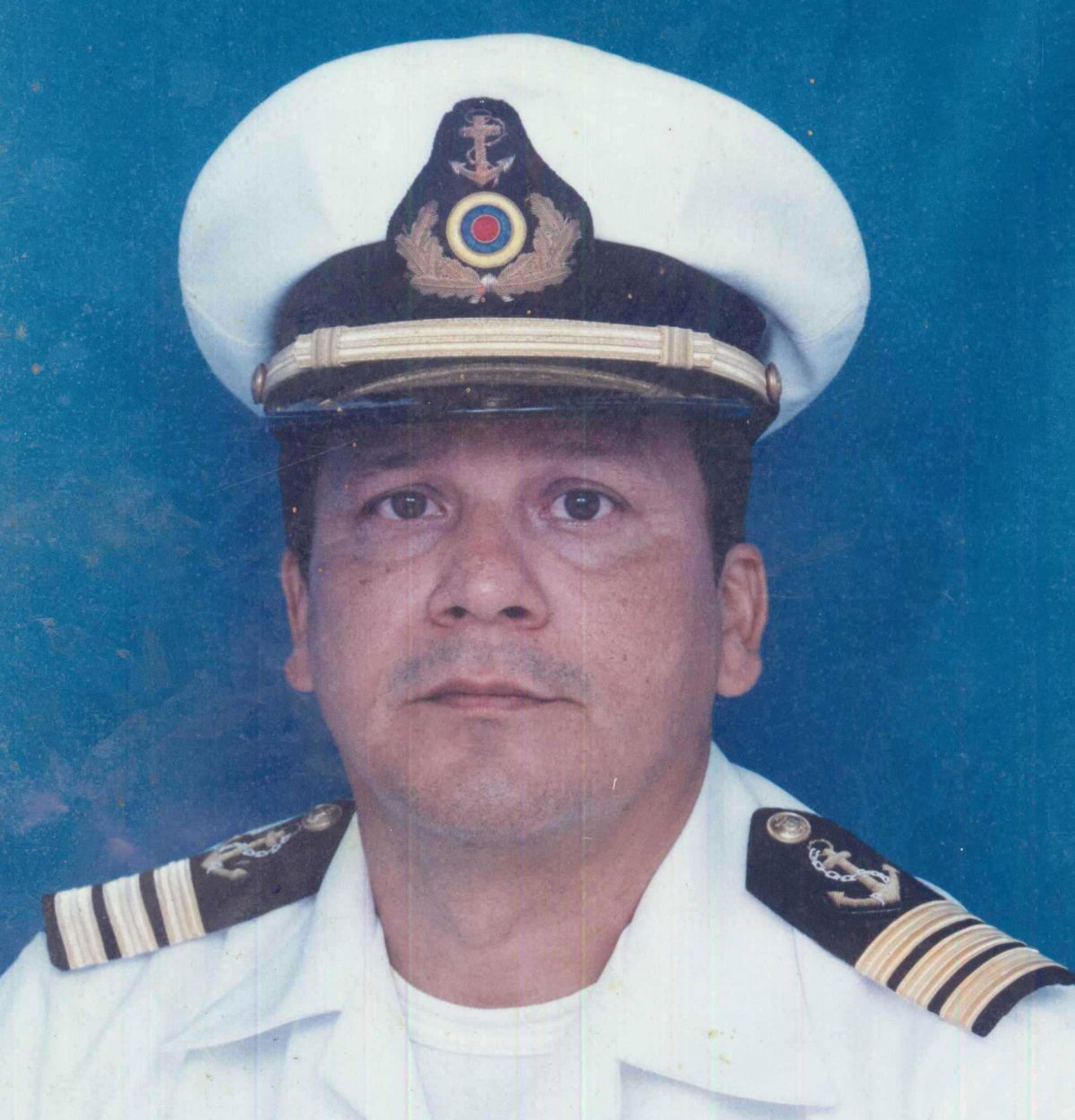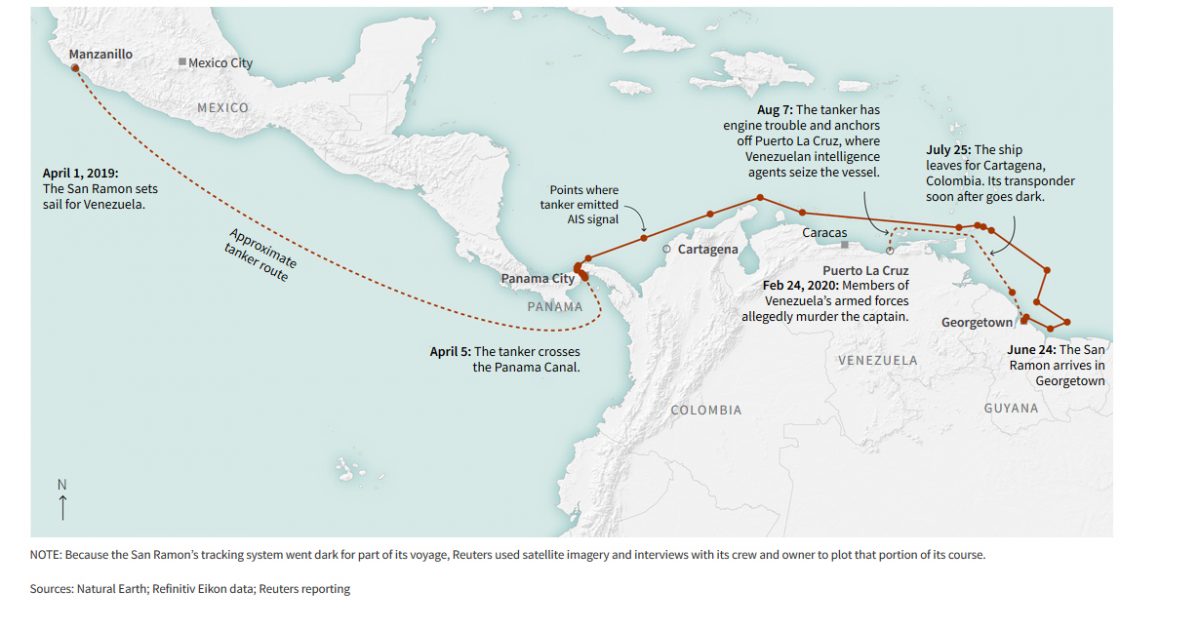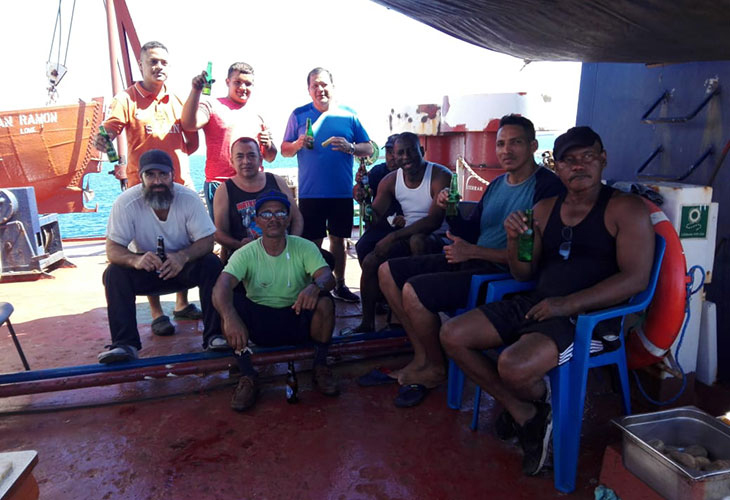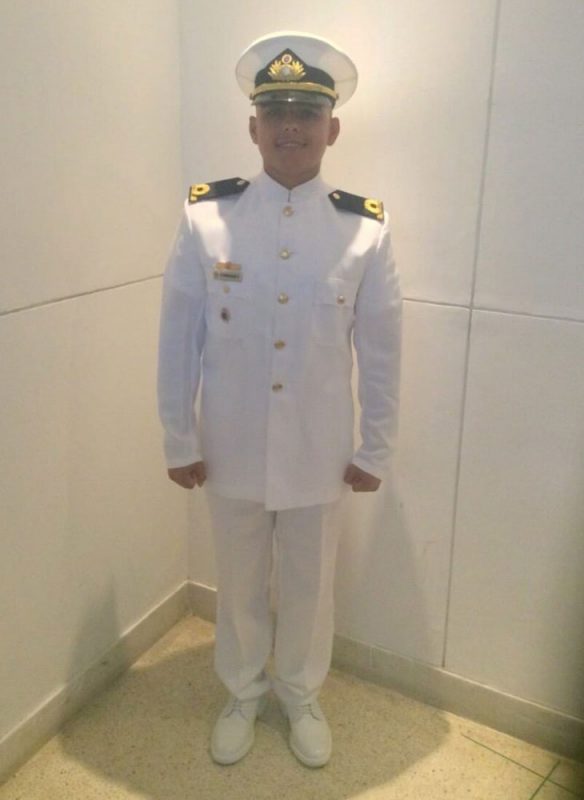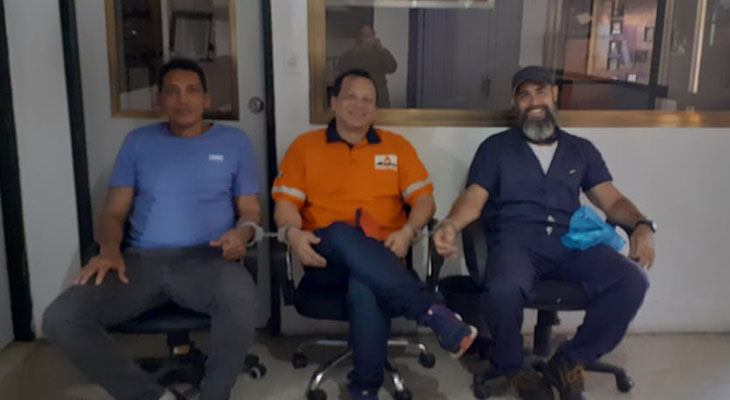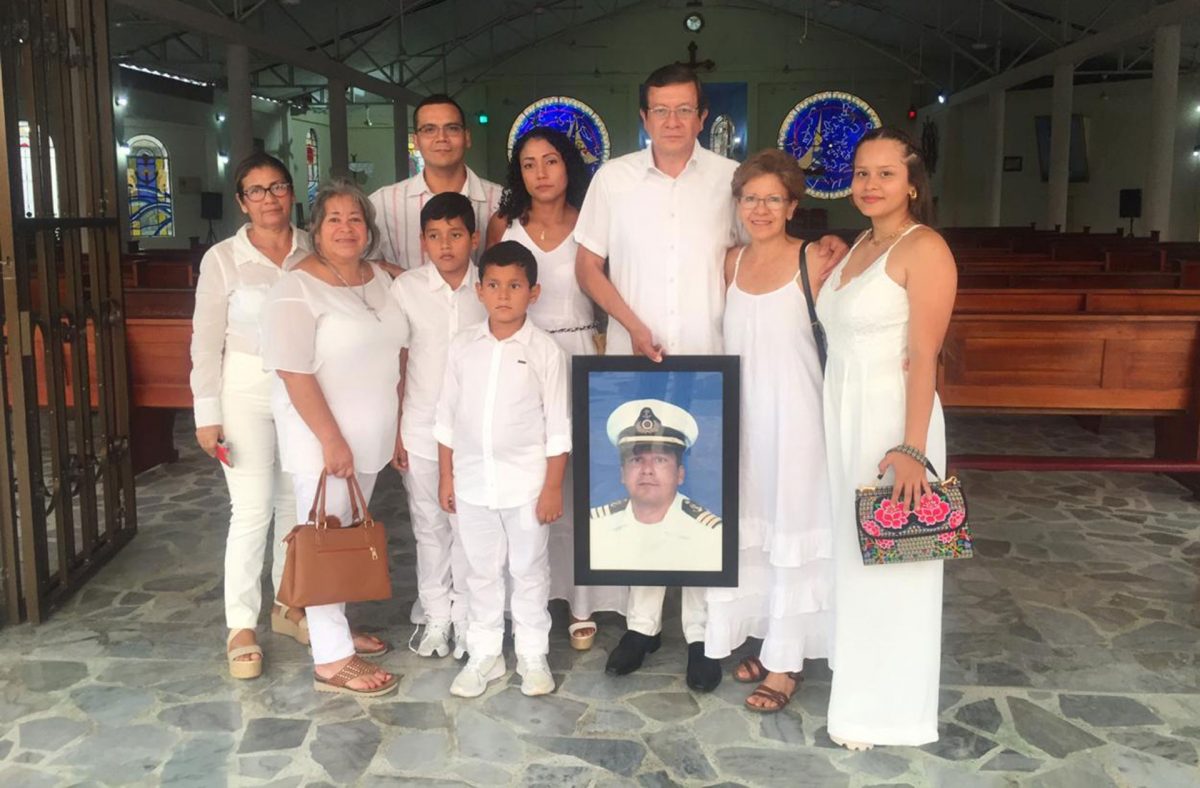CARACAS, (Reuters) – Around midnight on February 23, Eulalio Bravo, a marine electrician, was dozing in his rack aboard the San Ramon, an oil tanker anchored off the coast of Venezuela.
Suddenly, he heard footsteps pounding along the passageway outside. His captain, Jaime Herrera, cried for help.
“Be still!” an unfamiliar voice ordered.
A gun fired.
By the time Bravo and eight other shipmates emerged to see what had happened, the captain lay dead, a gunshot in the back of his head. Herrera’s stateroom had been pillaged, drawers flung open, his bunk overturned. The killers were gone, as were thousands of dollars the captain kept under lock and key, according to crew members interviewed by Reuters.
The murder, one of a growing number of violent incidents that have roiled Venezuelan waters in recent years, is an extension of a bloody crime wave that has beset the country since its economy collapsed last decade.
But it is also part of a troubling trend in which state agents, from military officers to police to senior government officials, have been accused of complicity in the very crimes they are meant to prevent.
After an investigation of the Herrera killing by forensic police at the nearby port of Puerto La Cruz, a state court in March ordered the arrest of three sailors from the Venezuelan Navy and four soldiers from the National Guard.
Some of those arrested had spent time aboard the tanker in the weeks before the crime, according to six crew members who detailed the episode to Reuters. The accused, the court announced, face charges including murder, aggravated robbery and illegal possession of firearms for their alleged roles in the death of the captain, a 59-year-old Colombian.
Crime, both petty and organized, has been one of the most dire consequences of the social meltdown under President Nicolas Maduro. Gangs and paramilitary groups run much of Venezuela’s black-market economy. Now, the public sector is in on rackets ranging from drug trafficking to bribes and kickbacks that grease the wheels of Venezuela’s crucial oil industry.
Maduro himself has been indicted in the United States for charges that include narcoterrorism. His wife, as Reuters reported in May, is under investigation by the U.S. Department of Justice for her alleged role in drug trafficking, an accusation the government called “slanderous.”
Further down the government payroll, police and military officials have grown infamous for theft and violence . Last week, a United Nations report said the country’s security forces have systematically committed extrajudicial killings, torture and other human rights abuses, likely under orders from senior government officials.
“The state is complicit in everything,” said Omar Gonzalez, an opposition lawmaker from Anzoategui, the eastern state where Puerto La Cruz is located.
Venezuela’s Information Ministry, responsible for communications for the presidency and other parts of the government, didn’t respond to requests for comment on this article. The oil, transport and defense ministries didn’t reply to questions about the San Ramon, the Herrera murder or crime afflicting ports and maritime commerce.
Police and the state prosecutor’s office, responsible for the case against those charged, didn’t return phone calls from Reuters to discuss it.
The San Ramon’s crew, who hailed mostly from Colombia, told Reuters they knew their voyage, a nine-month odyssey that began in Guyana in July 2019, could be problematic.
Growing insecurity in Venezuela had already led some fellow mariners to avoid sailing there. And U.S. sanctions, designed to block commerce with Maduro’s government, meant their employer, the Guyanese company that owns the vessel, could be punished for the very transaction they set sail for – loading a shipment of Venezuelan diesel.
Yet their ordeal exceeded their worst expectations.
Shortly after entering Venezuelan waters, the vessel’s engine failed, the mariners told Reuters, prompting Herrera to radio for help.
Instead of assistance, they said, intelligence agents arrived, boarded the vessel, and stole personal belongings. The agents then sought to shake down the captain, the mariners added, threatening to charge him and the crew with fuel smuggling – even though their cargo tanks were empty.
When Herrera refused to pay, the crew told Reuters, the agents ordered the military to guard the vessel. For the next six months, until Herrera was murdered, the ship and its crew floated in legal limbo.
“The experience destroyed me,” said Bravo, the electrician. “It was total chaos.”
Several aspects of the San Ramon’s voyage appear unusual.
Shipping data reviewed by Reuters indicate that its Automatic Identification System, a device that transmits a vessel’s location and is mandatory under international maritime rules, was disengaged as it approached Venezuela. Loading schedules for Petroleos de Venezuela SA, the state-owned oil company and the only legal supplier there, don’t mention any cargo intended for the San Ramon.
PDVSA, as the company is known, didn’t respond to requests for comment about transaction plans or its loading schedules, which were reviewed by Reuters independently.
Crew members, in dozens of separate interviews, told Reuters that only Herrera knew the full voyage details and that the disparities could have been because of the engine failure and an abrupt detour they took as a result.
Initially, they said, Herrera had planned to sail first to Colombia for maintenance and load the diesel on their return. It isn’t clear whether the identification device was shut off deliberately or if the ship’s glitches could have interfered with its operation.
Either way, the vessel’s problems were compounded by the failings of Venezuela’s economy, its shipping industry and its maritime and defense agencies.
Piracy off the coast surged after Venezuela entered recession – from a couple of incidents a year in 2013 to 30 by 2017, according to Control Risks, a London consultancy. While attacks have tailed off more recently as cargo traffic tanked, Venezuelan authorities appear unable or unwilling to manage them.
Incident reports compiled by the International Maritime Bureau, an industry organization, show that the Puerto La Cruz port authority, after two separate tanker heists in 2018, failed to respond to captains’ calls for help.
The port authority didn’t respond to requests for comment. After Herrera’s murder, the agency issued a brief report about the attack on the San Ramon, but hasn’t disclosed further details about it.
In ports and dockyards, where decrepit vessels bob unattended and container lots sit empty, some workers have taken to stealing what little cargo comes through. In March, intelligence agents arrested the head of PDVSA’s maritime unit, along with 37 other employees, for allegedly trafficking fuel.
Soldiers and sailors, charged with guarding many facilities, earn the equivalent of a few dollars a month, forcing many to moonlight and tempting some to turn to crime.
Upon seeing their captain’s body, the San Ramon’s crew immediately had suspicions. The assailants, they believed, knew the vessel well – boarding, finding Herrera, and leaving without help. A boatswain, who peeked from his cabin during the attack, told Reuters he saw masked men wearing black military boots identical to those worn by the troops who guarded the ship.
When the court announced the arrests, crew members recognized the name of a naval legal officer among those of the soldiers and sailors charged. The young officer was charged with aggravated robbery and illegal possession of a firearm. He had grown friendly with Herrera, and had learned of the cash kept in the stateroom, crew members say the captain told them.
“From the moment they boarded, the military started planning what to do with us,” Bravo told Reuters.
“THIS SHIP HAS BEEN SEIZED”
On January 31, 2019, a rusty, 75-meter tanker anchored off Manzanillo, Mexico, set a destination for Venezuela, shipping data show.
The tanker was until then owned by a Mexican fuel company and known as the Lobos Tuxpan. The ship had spent recent years close to shore, mostly as a storage vessel. It was 40 years old and had already suffered hull damage and extensive repairs, according to shipping records and two people familiar with the company that owned it, Maritime Fuel Supply S de RL de CV.
“They sold it almost as junk,” one of the people said. This person said that Maritime Fuel Supply is no longer in business and was at the time liquidating its assets, fetching about $400,000 for the old ship. Reuters was unable to reach any former executive or owner from the company.
The buyer: Seaboard Investments, a company that would appear in the commercial registry in Georgetown, Guyana’s capital, several months later. Seaboard’s director and secretary is a local trader named Sammie Ravendranauth, the registry shows.
Ravendranauth spent the previous decade ferrying malt beer and other goods from Venezuela to Guyana, according to records compiled by Import Genius, a company that tracks import and export data. Because Venezuela provides generous subsidies for food and other essentials, many goods could be bought there cheaply and sold at a steep markup abroad.
The business had risks.
In 2011, a Venezuelan court document shows, Ravendranauth was piloting a trawler along the Orinoco River, bound for Guyana, when Venezuelan soldiers boarded to check cargo. Ravendranauth, the document says, showed them export papers for plastic chairs and beer. Below decks, however, the soldiers found 37,000 liters of diesel.
In an interview in Georgetown, Ravendranauth told Reuters the fuel was legal, but that the soldiers suspected he was smuggling. He spent 45 days in jail but was released without charges, he said.
The Venezuelan court document records that he was detained on suspicion of smuggling, but didn’t specify any charges. Reuters found no evidence of any criminal conviction for Ravendranauth.
He was undeterred from doing business in Venezuela.
In early 2019, he told Reuters, two associates in Venezuela approached him about a venture. The associates asked him if he would register a company in Guyana to operate a vessel that the Venezuelans would buy to export fuel there.
Ravendranauth declined to identify the associates. Their names aren’t in the commercial registry, and Reuters was unable to determine their identities.
Ravendranauth agreed to the deal. He focused on administration, he said, and holds no financial stake in the company. “I’m just like the front person here,” he told Reuters.
When Seaboard acquired the Lobos Tuxpan, a broker had changed its name to San Ramón and moved its flag from Mexico to Togo. The broker hired a Peruvian captain to sail the ship from Mexico to the Guyanese capital of Georgetown. The vessel departed in April 2019 and arrived in Guyana that June, shipping data show.
There, Ravendranauth hired a new skipper – Herrera. He was a longtime captain and veteran of Colombia’s navy, and knew South America’s Caribbean coast well. He also knew many merchant mariners, like Bravo, the electrician and a fellow Colombian, who had recently sailed on another vessel with him.
By July, Herrera had recruited Bravo, four other Colombians and a Cuban first mate. The job paid about $1,500 a month, crew members said, a good salary for the local market. And despite their misgivings about Venezuela, the mariners trusted Herrera.
“He knew how to lead,” said Alexander Orobio, a machinist who signed on.
In Georgetown, the crew boarded a boat in disrepair, its red and blue hull scarred, its hydraulics leaking into a gearbox needed for propeller control. Ravendranauth, who visited the crew in port, said he agreed with Herrera that a trip to Colombia for maintenance was a good idea.
On July 25, they cast off.
Herrera sailed west, following the coastline as they entered Venezuelan waters. The engine failed and for a few days they had no propulsion. When his mechanics restored some power, Herrera decided to call at Puerto La Cruz to seek repairs.
On August 7, he anchored in Pozuelos Bay, eight miles from the port, and alerted the port authority of the ship’s position. That evening, a Venezuelan Navy patrol boat pulled alongside. Reuters couldn’t determine whether the patrol was responding to Herrera’s call or whether it had approached the San Ramon on its own.
A dozen masked military officers with rifles climbed aboard, the crew said. They identified themselves as members of Venezuela’s military counterintelligence unit, known as the DGCIM, and ordered the crew to gather on deck while they searched the tanker.
“This ship has been seized,” crew members said an officer told them.
The officer in charge summoned Herrera and two mariners: Enmanuel Penate, the Cuban first mate, and Orobio, the machinist. The officer accused them, without evidence, of smuggling fuel, Orobio and Penate told Reuters.
Although they showed him the empty tanks, the officer persisted. He pulled Herrera aside, they said, and told him he could “negotiate” their release in exchange for a payment. Herrera refused. He later briefed the men about the alleged extortion, they said.
The Venezuelan agents left the tanker, but said the three men would face smuggling charges. They ordered three armed sailors to guard the ship and crew.
When the mariners returned to their cabins, items including a costly GPS tracker were gone. Orobio said his phone was missing, along with the equivalent of about $25 in Colombian pesos, vanished from his wallet.
The crew became prisoners on their own vessel.
To pass the time, and while the accused awaited a court hearing, they worked to maintain and fix the ship. Three other mariners, local technicians, joined the crew to help with repairs.
Ravendranauth said his Venezuelan partners paid other locals to convey food and other supplies to the ship. They also paid a lawyer to represent the men in court.
In late August, a Navy boat carried Herrera, Penate and Orobio to shore for the hearing. A judge told the men, cuffed in a chain by the wrists, that they faced 14 years in prison if they were convicted. “We can’t let you go,” the judge told them, Orobio said.
The court, a criminal tribunal in the state capital of Barcelona, hasn’t issued any public documentation on the case and didn’t respond to requests by Reuters for more information. Ravendranauth and four Venezuelans familiar with the proceedings confirmed the hearing.
Gianfranco Cultrera, the Puerto La Cruz attorney who represented the men, declined to comment, saying he wasn’t authorized by the San Ramon’s owners to speak about the case.
“A GOOD MAN”
For months, the uncertainty continued.
The Venezuelan Navy rotated guards on the ship and appointed Edgard Amundarain, a legal officer, to be its liaison, the crew said. He visited regularly, slept on board, and gradually endeared himself to Herrera and the crew, dining and playing dominoes with them.
The captain often invited Amundarain into his stateroom, where they discussed the case and other matters, crewmen who saw them said. “He won the captain’s confidence,” Penate, the first mate, told Reuters.
Amundarain had graduated from naval college the year before, according to posts on his Facebook page. “May God guide you along the path to success,” his father, Edgar, commented on photos of the proud graduate in dress whites.
Other posts by his father, himself a Navy veteran, related financial struggles for the family. Late last year he wrote that the Navy hadn’t paid his pension and that the family would go without pan de jamon, a traditional bread filled with ham, for Christmas.
“Total sadness,” he lamented.
Amundarain told Herrera about his family’s woes, three crewmen said the captain told them. Herrera, they said, offered to lend Amundarain money from the ship’s petty cash supply. The mariners said the cash, in a stateroom safe, amounted to somewhere between $5,000 and $10,000.
Reuters couldn’t reach Amundarain for comment or identify a lawyer for him. It isn’t clear whether he and the other defendants charged in relation to the killing have entered a plea. Edgar, his father, in a Facebook message said he was “worried” about his son’s arrest but didn’t answer further questions.
In December, a Navy boat once more took the mariners accused of fuel smuggling back to the courthouse. This time, Orobio said, the judge told them the charges would be dropped, citing a lack of evidence. Before they could weigh anchor, however, they would need an order from the Interior Ministry releasing the seized tanker.
Herrera sought the order, the crew said, but never received it. The Interior Ministry didn’t respond to requests from Reuters for comment.
The crew grew exasperated.
In January, Bravo and two other mariners asked Herrera for permission to leave on their own. The captain agreed and signed their releases, according to the men and discharge papers reviewed by Reuters. They hired a motorboat to take them to shore.
Midway there a Navy patrol radioed and told them to return. It isn’t clear why they weren’t allowed to leave.
On February 23, the mariners relaxed and enjoyed a Sunday barbecue. They closed off the gangway, as usual, at 7 p.m. Most of the crew returned to their cabins.
This description of the attack on their ship was assembled from individual interviews with five of the San Ramon’s mariners. Their accounts were consistent with one another and with the limited details in the initial report by the port authority and the court’s statement of the charges against the seven sailors and soldiers.
Around midnight, Juan Carlos Cabeza, an engine mechanic, walked to the stern to make a phone call. While there, Cabeza told colleagues, six masked men boarded from a motorboat, aimed guns at him, then bound and gagged him. One of the assailants stood guard, he said, while the others went toward the cabins.
Cabeza declined requests to speak with Reuters, but related his account of the attack to his shipmates.
Midnight was when Herrera generally left his stateroom for a nightly check of the vessel. The crew told Reuters they heard the assailants encounter the captain and force him back toward his cabin. The boatswain, who spoke on condition that Reuters identify him only by his first name, Dagoberto, said he glimpsed the attackers through his door.
The group approached the cabin of first mate Penate. One attacker kicked his door.
Dagoberto, Orobio and Bravo heard someone shout for the first mate to hand over his money. Then the assailant yelled: “Open this door or we’ll kill your friend,” referring to Captain Herrera.
Penate didn’t answer. He spoke with Reuters by phone from Cuba about the voyage, but declined to discuss the attack itself, saying he didn’t want to interfere with the case in Venezuela.
Shortly afterward, five crew members heard Herrera.
“Help! Help!” he cried. “Call the Navy!”
Then the gunshot.
Bravo, in a fit of panic, clambered through a cabin porthole, hoisted himself to an upper deck and hid in a generator room. He stayed until sunrise, shipmates thinking he’d jumped overboard. The rest of the crew, meanwhile, heard the assailants run back toward the gangway.
Santiago Suarez, a welder, said he opened his door and saw the captain, bloodied and face down, dead in the passageway. Penate, assuming command, radioed the Navy.
Three hours later, a contingent of National Guard and forensic police officers arrived, the crew said. They shot photographs, dusted for fingerprints, and took note of the missing cash. They retrieved Herrera’s body and ferried the crew to a Puerto La Cruz police station to give statements.
Reuters was unable to learn the details of the investigation’s findings.
Amundarain was indicted on robbery and firearms charges. Two other sailors, Josmil Perez and Victor Maleno, were charged with the murder. Perez, Maleno and their lawyers couldn’t be reached for comment. People familiar with the case said the seven defendants remain detained, awaiting trial.
On March 13, 254 days after they first boarded, the crew was allowed by prosecutors to leave the San Ramon. The tanker, Ravendranauth said, remains off the coast of Puerto La Cruz, awaiting further repairs.
Most of the crew drove home to Colombia. Prosecutors told them they may need to appear as witnesses in trial hearings, but that they could do so remotely. So far, no hearing has been held.
Herrera’s wife, Claudia, with whom he had two small children, told Reuters she’s uncomfortable talking about his murder. She shared a video he sent last Christmas in which Herrera told her how much he loved the family. “God willing, soon we can see one another,” he said, sobbing.
“I’ve been trying to remove from my mind thoughts of what my husband suffered,” Claudia said in a text message.
Bravo, the electrician, said he believes the killers took advantage of the captain’s honesty and kindness. “He was a good man,” Bravo said from his hometown, Colombia’s Pacific port of Buenaventura. He misses the sea, he added, and hopes to find work again soon.
One thing is clear: “I’ll never return to Venezuela.”
